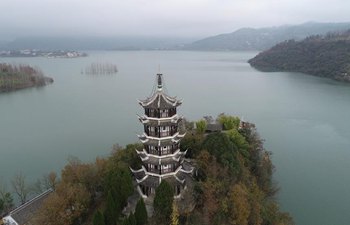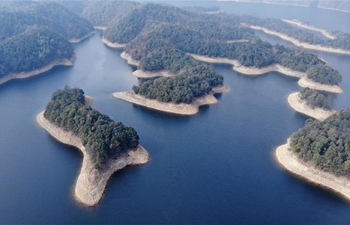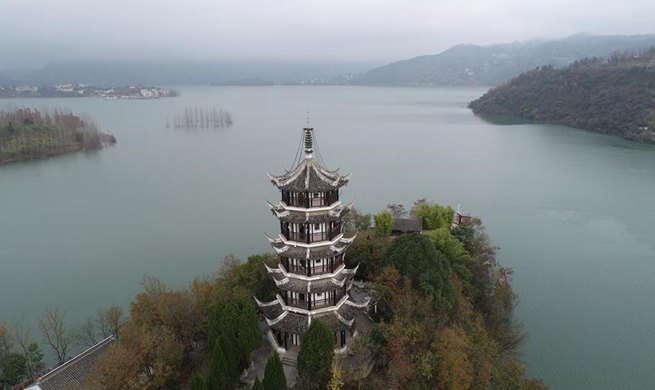WASHINGTON, Dec. 7 (Xinhua) -- NASA's asteroid probe OSIRIS-REx found asteroid Bennu constantly discharged particles into space from different locations on its surface.
The study published in this week's Science journal released findings of those mysterious particle ejection events and possible mechanisms behind them.
The OSIRIS-REx team observed the three largest particle ejection events on Jan. 6 and 19, and Feb. 11. The first and largest event originated in Bennu's southern hemisphere, and the second and third events occurred near the equator. All three events took place in the late afternoon on Bennu, according to the study.
The observed particles traveled up to three meters per second, and measured from smaller than 2.5 cm up to 10 cm in size. After ejection from the asteroid's surface, the particles either briefly orbited Bennu and fell back to its surface or escaped from Bennu into space.
"This is a great opportunity to expand our knowledge of how asteroids behave," said Dante Lauretta, OSIRIS-REx principal investigator at the University of Arizona, Tucson.
The team listed three possible mechanisms that may have caused the ejection: meteoroid impacts, thermal stress fracturing, and released of water vapor.
Small fragments of space rock could be hitting Bennu where the probe is not observing it, which shake loose particles with the momentum of their impact.
Also, the asteroid's surface warms significantly in the mid-afternoon when the three major events occurred. Therefore, the sharp temperature change may crack the rocks and eventually eject particles.
The third candidate is the water release. When Bennu's water-locked clays are heated, the water could begin to release and create pressure, thus agitating the asteroid's surface.
"It could be that more than one of these possible mechanisms are at play," said Steve Chesley, a senior research scientist at NASA's Jet Propulsion Laboratory.
"For example, thermal fracturing could be chopping the surface material into small pieces, making it far easier for meteoroid impacts to launch pebbles into space," said Chesley.
If meteoroid impacts and/or thermal fracturing cause the ejection events, this phenomenon is likely happening on all small asteroids. However, if water release is the cause, it would be specific to water-bearing asteroid like Bennu, according to the researchers.
Bennu, orbiting around the sun every 1.2 years, is a rare B-type asteroid because it is primitive. It has not significantly changed since its formation nearly 4.5 billion years ago.
The probe is expected to extend its sampling arm and touch the asteroid's surface to collect at least 60 grams of loose material in 2020, possibly containing some material that was ejected.
The material returned to Earth from Bennu can increase the understanding of asteroids and the ways they are both different and similar, according to NASA.













